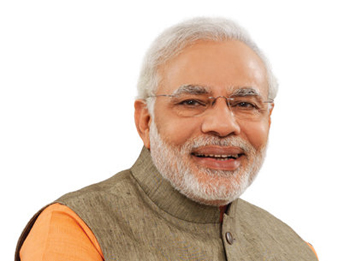 Ashok Tuteja (30 December 2017) – Cashing in on its growing economic muscle power, India pursued an aggressive foreign policy in 2017 which boosted the global image of the Narendra Modi government even as relations with key adversaries like China and Pakistan plummeted to a new low during the year.
Ashok Tuteja (30 December 2017) – Cashing in on its growing economic muscle power, India pursued an aggressive foreign policy in 2017 which boosted the global image of the Narendra Modi government even as relations with key adversaries like China and Pakistan plummeted to a new low during the year.
Also, the growing influence of China in Nepal, Sri Lanka and the Maldives remained a cause of concern for New Delhi.
The election of Justice Dalveer Bhandari to the International Court of Justice (ICJ) with an overwhelming majority at the United Nations was the crowning feature of India’s diplomatic successes.
The fact that Britain, a permanent member of the UN Security Council, was forced to withdraw its candidate from the race highlighted the importance the world community attaches to India’s role in the international arena.
India also became a member of the Wassenaar Arrangement, a key non-proliferation regime, but China continued to block New Delhi’s admission to the Nuclear Suppliers’ Group (NSG).
India also became a member of the Shanghai Cooperation Organisation, a Eurasian political, economic and security grouping hitherto dominated by China and Russia.
Contrary to apprehensions in Indian circles, US President Donald Trump emerged as one big supporter of India on the global stage as he renamed Asia-Pacific as Indo-Pacific region, much to the discomfiture of China, and asked New Delhi to shoulder greater responsibility in Afghanistan, making Pakistan jittery.
The personal chemistry that Prime Minister Modi established with President Trump during his visit to Washington in June may well redefine Indo-US relations in the coming years.
Despite the perception that India and Russia were not on the same page on many global issues, particularly Afghanistan, the two countries continued to break new grounds in bilateral ties, particularly in the field of defence and counter-terrorism. For the first time, India was the ‘Guest of Honour’ at the St Petersburg International Economic Forum in June.
When it comes to relations with Beijing, the 70-day stand-off between Indian and Chinese troops at Doklam brought the two Asian giants close to another conflict. Thankfully, better sense prevailed on Beijing and the two countries successfully resolved the stand-off through secret diplomatic negotiations.
Many argue that it was only due to the assertive stance of the Modi government over the construction activity being undertaken by Chinese troops at Doklam in violation of the status quo that Beijing realised New Delhi’s determination not to buckle under pressure. New Delhi’s response to Chinese misadventures in border areas had been hazy in the past.
But the Doklam incident gave a body blow to the process of normalisation of Sino-Indian relations at a time when New Delhi was already upset with Beijing for blocking India’s entry into the NSG and its attempt to get JeM chief Masood Azhar listed as a global terrorist by the UN Security Council.
India also took a big foreign policy leap in May when it vehemently opposed China’s Belt and Road Initiative (BRI) on the ground that the China Pakistan Economic Corridor (CPEC), the flagship project of BRI, passes through Pakistan occupied Kashmir (PoK).
Pakistan continued with its policy of aiding and abetting terrorism in India and its Army indulged in regular violation of the ceasefire on the border.
The two countries continued to exchange barbs over the death sentence awarded to former Indian Navy officer Kulbhushan Jadhav by a Pakistani military court on concocted charges.
India achieved a major success in the Jadhav case when it took the matter to the ICJ over the denial of consular access to the Indian prisoner in violation of the Vienna Convention on Consular Relations.
The ICJ has stayed Jadhav’s execution till it takes a final view in the case. The ‘humiliating’ meeting arranged by the Pakistani establishment between Jadhav and kin in Islamabad on 25 December has further vitiated the atmosphere between the two countries.
Any possibility of the resumption of dialogue between the two neighbours looks a distant dream, given the fact that Pakistan will witness elections in 2018 and India in 2019.
With China displaying an aggressive attitude on regional issues, India joined Japan, Australia and the US to set up a quadrilateral dialogue, which held its first meeting in November on the margins of the ASEAN Summit in the Philippines. Of course, Beijing has not taken kindly to the formation of the grouping.
Prime Minister Modi undertook a landmark visit to Israel in July while skipping Palestine from his itinerary thus de-hyphenating India’s relationship with the two main adversaries in the Middle East.
However, India stood its ground and voted against the US move to shift its capital to Jerusalem at the UN, thus making it clear to the world community that it has not deviated from its principled position on the Palestinian cause.
Modi also visited the Philippines for the ASEAN Summit to give an impetus to India’s ‘Act East’ policy.
He also personally extended invitations to the Heads of ASEAN nations to be chief guests at India’s Republic Day. So India is all set to begin 2018 on a high note with as many as ten world leaders witnessing the parade at the Rajpath on 26 January.

